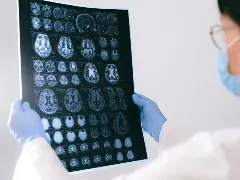

There are many ways to answer this common question. As a patient whose initial screenings failed to detect my slow-growing yet dangerous cancer—and as I continue to screen for remaining cancer after my three curative attempts—I share these perspectives with the hope all men will seek early screening for this very treatable yet potentially life-altering and deadly disease.
1. Recognize the Misunderstanding
All too often we hear prostate cancer is an old man’s disease and most men will die with it—not from it. Well, here in the United States, over thirty-thousand men are still dying of this disease every year, many being young and otherwise healthy. Nearly one-half million men are trying to slow disease progression with life-altering hormone-blocking drugs. Yet, there is no established national screening program. It is often said this is because men cannot face the anxieties of screening, and all too often there are unnecessary biopsies and even unnecessary treatments. Yes, it is well-established and accepted that three-out-of-four elevated PSA levels are not cancer; so, let’s celebrate the three that are not cancer and concentrate on finding early the one-in-four that are cancer.
2. Understand the Procedures
The most common screening for prostate cancer is a simple blood draw to measure the level of prostate specific antigen (PSA), a protein made only by the prostate gland. The amount of PSA detected in the blood is an indicator of a man’s age and the health of his prostate gland. The second most common procedure is the DRE, the digital rectal exam. While the DRE is invasive and may be repulsive to some men, we simply need to check our reservations against the screenings women endure. The doctor gently inserts a gloved and lubricated finger into the rectum to examine the gland. A third procedure that is gaining in use is the multiparametric MRI.
3. Navigate Post-Screening Information
The critical and necessary understanding about the DRE procedure is that it misses many (most) early stage cancers, as in my case. It is therefore important that men do not casually accept the “all clear,” for the doctor may not have felt the cancer that is actually present. Fortunately, MRI procedures are becoming more common in prostate cancer screening. In my case, the MRI findings were critical to determine the risk my cancer posed and which treatment method was best for my circumstances.
The objective of thorough screening is to detect the presence of this disease in its earlier and more treatable (curable) stage. With the information obtained from PSA testing, DRE, and, most importantly an MRI, men and their doctors will be better able to determine if a biopsy is warranted. With MRI findings, the doctor can better target the biopsy sample. During my years of early screening, my doctor and I misinterpreted my PSA and DRE information. As my PSA repeatedly rose and fell and as my DRE was always “clear,” we became complacent that I was among the three-of-four whose rising PSA was not cancer. It was not until my MRI that we realized we had missed my growing tumor. In hindsight, I graphed my fluctuating PSA results, obtained over ten-plus years of screening, and what was clear was that my PSA was steadily rising. I was the one-in-four whose elevated PSA was in fact cancer.
Murray Keith Wadsworth, the author of Prostate Cancer: Sheep of Wolf?, is passionate about spreading the dark truth about prostate cancer. His sudden diagnosis and shocking process to treatment continues to drive him to untangle and share the systemic misinformation around the disease.








Comments
Post a Comment